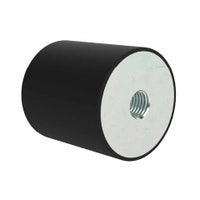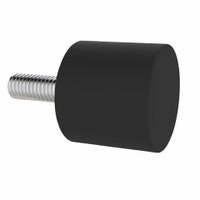
About WDS Anti-Vibration Mounts
Anti-vibration mounts are devices designed to reduce or eliminate vibration and noise caused by machinery or equipment. AV mounts are used in various industrial, automotive, and marine applications, where vibrations can cause damage to the surrounding structures or equipment, create noise pollution, or cause discomfort to people nearby.


Anti-vibration mounts are used on HVAC Equipment, ventilation ducts, machinery, motors-pumps, and specialised handling equipment.
AV mounts work by isolating the equipment from the surrounding structures, reducing the transmission of vibrations from the source to the mounting surface. They usually consist of a resilient material, such as rubber, that is bonded to a metal or plastic plate. The plating is then attached to the equipment and the mounting surface using bolts or screws.
Materials
AV Mounts are installed for various applications which is why they are made from different materials, from rubber to polyurethane.


Rubber materials have excellent flexibility and absorption properties. Different rubber materials are used for anti-vibration mounts like neoprene, silicone, and EPDM (ethylene propylene diene monomer). Rubber materials are beneficial to use under these conditions where harsh weather conditions or harmful chemicals are in operation.
AV mounts are also paired and bonded to metallic parts to ensure strong structural support when mounting other components. The metallic base is made of stainless steel, steel, and aluminium because they resist corrosion.
Difference between Rubber AV Mounts and Hydraulic Stoppers
Hydraulic stoppers, also known as shock absorbers, are like rubber bumps in that they are intended to absorb and dissipate oscillations, yet they are designed for different applications. Rubber stops can be used in common appliances and machinery. Hydraulic bumper stops are used in high-performance machines and vehicles. Here are the distinctions between hydraulic bumpers and rubber mounts.


Construction
Hydraulic stoppers, also known as shock absorbers, are like rubber bumps in that they are intended to absorb and dissipate oscillations, yet they are designed for different applications. Rubber stops can be used in common appliances and machinery. Hydraulic bumper stops are used in high-performance machines and vehicles. Here are the distinctions between hydraulic bumpers and rubber mounts.
Functionality
Rubber stoppers naturally absorb vibrations at a linear level when compressed, whereas hydraulic bumpers compress dynamically and become stiffer as the mechanism is tuned for specific purposes.
Durability
Hydraulic bump stops are durable in extreme conditions and can be repaired or rebuilt. In contrast to rubber bumper stops, rubber bumper stops cannot be repaired and will degrade over long periods of use.




















